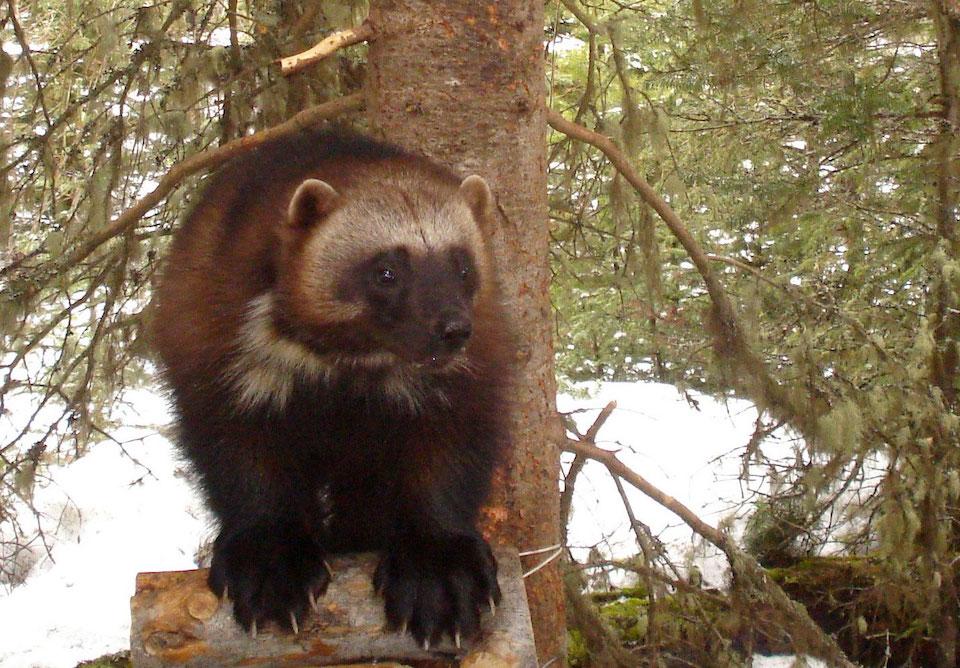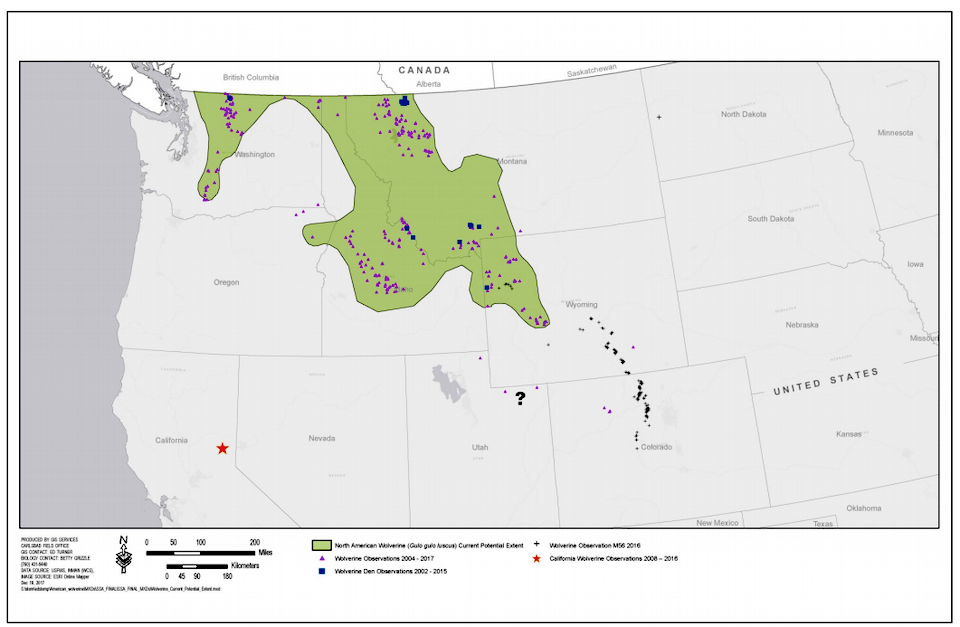
The U.S. Fish and Wildlife Service on Thursday denied ESA protections for wolverines/USFWS, Audrey Magoun
A decision Thursday by the U.S. Fish and Wildlife Service to deny wolverines protection under the Endangered Species Act prompted a coalition of groups to announce plans to sue the agency of that decision.
“Recent scientific information makes clear that wolverines face threats from destruction of their snowy habitat due to climate change,” said Earthjustice attorney Timothy Preso. “We intend to take action to make sure that the administration’s disregard of the real impacts of climate change does not doom the wolverine to extinction in the lower 48 states.”
But in its decision the wildlife agency said peer-reviewed science shows the small carnivores are doing well, population-wise.
"New research and analysis show that wolverine populations in the American Northwest remain stable, and individuals are moving across the Canadian border in both directions and returning to former territories," a Fish and Wildlife Servie release said.
Part of the agency's decision was based on a 2018 "Species Status Assessment," which noted that "wolverine appears resilient within its contiguous United States range."
"The most significant stressor currently and in the future appears to be the effects of climate change, such as warming temperatures and loss of snowpack," the document further noted. "Using fine-scale snow modeling, we estimated that large areas of spring snow (May 1) will remain in one mountain region where wolverines are known to den. Further, wolverine dens have been recorded in areas not previously identified or predicted to occur based on spring (May 15) snow cover."
The assessment presented a rosy picture of wolverine populations, stating that "wolverines occupy areas in the west-northwestern United States, and have recently dispersed into historically occupied areas, including California, Utah, Colorado, and Oregon; verified reproducing wolverine populations are found in Idaho, Washington (Northern Cascades), Montana, and northwest Wyoming. One individual wolverine (female) was also documented from 2004 until its death in 2010 in Michigan."

Current potential range for wolverines, according to a 2018 report/USFWS
The assessment pegged the wolverine population in the country at 318, with potential habitat to support 644 individuals. Canada, meanwhile, claims thousands of wolverines, according to the assessment.
Earlier this summer wildlife biologists at Mount Rainier National Park in Washington announced that a female wolverine with kits had been spotted in the park, marking the first time in more than a century that such a sighting was confirmed.
The groups represented by EarthJustice maintain there are fewer than 300 wolverines left in the contiguous United States, and added that listing wolverines as threatened or endangered would trigger new, badly needed conservation efforts.
The groups the legal firm is representing include the Center for Biological Diversity, Conservation Northwest, Defenders of Wildlife, Friends of the Clearwater, Idaho Conservation League, Jackson Hole Conservation Alliance, Klamath-Siskiyou Wildlands Center, Greater Yellowstone Coalition and Rocky Mountain Wild.
On Thursday the lawyers submitted a formal notice of intent to sue in 60 days.
“It’s outrageous that the Fish and Wildlife Service has again shrugged off the science showing that wolverines are in trouble and desperately need federal protection,” said Andrea Zaccardi, a senior attorney with the Center for Biological Diversity. “It’s sad that after years of inaction, we need to go to court again to ensure wolverines get the protections they need before it’s too late.”
“The wolverines in the Clearwater Basin are in particular trouble, in part, because the Forest Service allows snowmobile use in prime wolverine habitat,” said Gary Macfarlane, with Friends of the Clearwater. “Climate change and preliminary indications that the Forest Service could open up even more wolverine habitat to winter motorized use could spell doom for wolverines in north-central Idaho.”
“Wolverine are rare, wide-ranging carnivores of the high wild country facing growing threats from climate change and winter recreation,” said Dave Werntz, science and conservation director at Conservation Northwest. “Wolverine deserve federal protection and the associated resources and recovery actions to ensure a future for wolverine in the Pacific Northwest.”
“Once again, the federal government has failed the wolverine,” said Brad Smith, North Idaho director at the Idaho Conservation League. “Without critically needed conservation efforts that a threatened or endangered listing would trigger, we fear that future generations of Idahoans will never be lucky enough to see the rare and sensitive wolverine.”
Wolverines, the largest land-dwelling members of the weasel family, once roamed across the northern tier of the United States and as far south as New Mexico in the Rockies and Southern California in the Sierra Nevada range. After more than a century of trapping and habitat loss, wolverines in the lower 48 today exist only as small, fragmented populations in Idaho, Montana, Washington, Wyoming and northeast Oregon.
In the wolverine’s last strongholds, the species is at direct risk from climate change. Wolverines depend on areas with deep snow through late spring. Pregnant females dig their dens into this snowpack to birth and raise their young. Snowpack is already in decline in the Western mountains, a trend that is predicted to worsen with a warming climate.
Wolverine populations are also at risk from traps, human disturbance, habitat fragmentation and extremely low population numbers resulting in low genetic diversity. Without new conservation efforts, the dangers faced by wolverines threaten remaining populations with localized extinctions and inbreeding, the conservation groups argued.



Comments
Go Blue
Pray for their protection! Pray !
CEASE AND DESIST your assault on our wildlife!!!